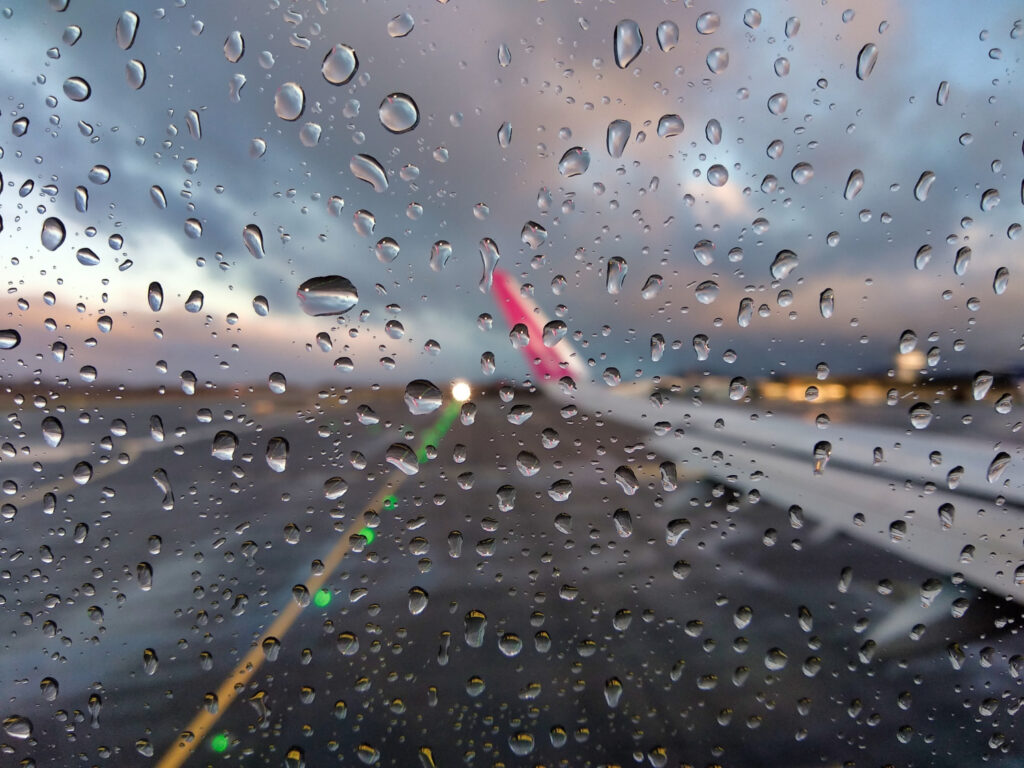Floods can be devastating, causing extensive damage to homes, infrastructure, and even taking lives. Being prepared and knowing how to protect yourself and others can make all the difference. In this guide, we’ll walk you through everything you need to know about preparing for and protecting yourself from floods. Let’s dive in!
1. Understanding Floods
What is a Flood?
A flood is an overflow of water that submerges land that is usually dry. Floods can occur due to various reasons including heavy rain, river overflow, rapid snowmelt, or dam breaks. Understanding the different types of floods is crucial for effective preparation.
Types of Floods
There are several types of floods, each with unique characteristics. Coastal floods occur due to high tides and storms. River floods happen when rivers overflow their banks. Flash floods are sudden and intense, often caused by heavy rainfall in a short period. Urban flooding occurs in densely populated areas with poor drainage systems.
2. The Importance of Flood Preparedness
Why You Need to Prepare
Flood preparedness is essential to minimize the impact on lives and property. Being prepared means having a plan, knowing evacuation routes, and having supplies ready. It’s about being proactive rather than reactive.
Consequences of Being Unprepared
Without proper preparation, floods can cause significant property damage, loss of personal belongings, and even fatalities. The emotional and financial toll can be overwhelming. Preparing in advance can help mitigate these risks.
3. Assessing Your Risk
Evaluating Your Area
Understanding your flood risk is the first step in preparation. Check flood maps and risk assessments for your area. Consider factors like proximity to water bodies, the history of flooding in the region, and local weather patterns.
Local Resources and Tools
Many local governments provide resources and tools to help residents assess their flood risk. Utilize these tools to understand your vulnerability and make informed decisions about your flood preparedness plan.
4. Creating a Flood Emergency Plan
Steps to Develop a Plan
Developing a comprehensive flood emergency plan involves several steps. Start by gathering your family and discussing potential scenarios. Identify evacuation routes, designate meeting points, and ensure everyone knows what to do in case of a flood.
Communication Strategies
Effective communication is critical during a flood emergency. Ensure everyone has access to emergency contact information. Consider establishing a group chat or other communication channels to keep everyone informed and connected.
5. Building an Emergency Kit
Essential Supplies
An emergency kit should include essential supplies like water, non-perishable food, a first aid kit, medications, flashlights, batteries, and important documents. Make sure to have enough supplies to last at least three days.
Customizing Your Kit
Customize your emergency kit based on your family’s needs. Consider items like baby formula, pet food, and medical supplies. Regularly check and update your kit to ensure everything is in good condition.
6. Protecting Your Home
Flood-Proofing Measures
Protecting your home from floods involves taking preventive measures. Elevate electrical appliances and utilities, seal basement walls, and install sump pumps. These steps can help minimize water damage during a flood.
Landscaping and Drainage
Proper landscaping and drainage can significantly reduce flood risk. Ensure your yard slopes away from your home, clean gutters and downspouts regularly, and consider installing French drains or other drainage systems.

7. Flood Insurance
Understanding Flood Insurance
Flood insurance is essential for protecting your home and belongings. Standard homeowners’ insurance policies typically do not cover flood damage. Understanding what flood insurance covers and how to obtain it is crucial.
Choosing the Right Policy
When selecting a flood insurance policy, consider factors like coverage limits, deductibles, and the specific risks in your area. Work with an insurance agent to find the best policy for your needs.
8. Evacuation Planning
When to Evacuate
Knowing when to evacuate can save lives. Pay attention to local weather alerts and evacuation orders. If authorities advise evacuation, leave immediately. Have a plan in place for where you will go and how you will get there.
Evacuation Routes and Shelters
Identify multiple evacuation routes and familiarize yourself with them. Locate nearby shelters and have a list of their addresses and contact information. Make sure your family knows the plan and practices it regularly.
9. Safety During a Flood
Staying Safe Indoors
During a flood, staying safe indoors involves moving to higher ground and avoiding basements. Keep emergency supplies handy, and listen to emergency broadcasts for updates and instructions.
Safety Outdoors
If you must go outdoors during a flood, avoid walking or driving through floodwaters. Six inches of moving water can knock you down, and one foot of water can sweep your car away. Always prioritize safety.
10. After the Flood
Returning Home
Returning home after a flood can be dangerous. Wait for official clearance before returning. Be cautious of structural damage, and avoid entering buildings until they have been inspected for safety.
Cleaning Up
Clean-up after a flood is challenging and requires proper precautions. Wear protective gear, dispose of contaminated items, and disinfect surfaces. Consider hiring professionals for extensive damage.
11. Health and Safety Concerns
Preventing Illness
Floodwaters can carry harmful bacteria and chemicals. To prevent illness, avoid contact with floodwater, use clean water for drinking and cooking, and ensure proper sanitation during clean-up.
Mental Health Support
The aftermath of a flood can be emotionally draining. Seek support from mental health professionals, connect with community resources, and talk to family and friends about your experiences and feelings.
12. Community Preparedness
Working Together
Community preparedness is crucial for effective flood response. Work with neighbors, local organizations, and authorities to develop community-wide plans and share resources.
Community Resources
Many communities offer resources like sandbags, emergency shelters, and information sessions. Participate in these programs to stay informed and prepared.
13. Protecting Vulnerable Populations
Elderly and Disabled Individuals
Special considerations are needed for vulnerable populations like the elderly and disabled. Ensure they have a plan, access to necessary supplies, and assistance during evacuations.
Children and Pets
Children and pets also require special attention during floods. Make sure they are included in your emergency plan, and have supplies specifically for their needs.
14. Technology and Flood Alerts
Using Technology
Technology can be a valuable tool during a flood. Utilize weather apps, emergency alert systems, and social media to stay informed and connected during a flood emergency.
Setting Up Alerts
Set up emergency alerts on your phone and other devices. These alerts can provide critical information about weather conditions, evacuation orders, and other important updates.
15. Government and NGO Assistance
Government Resources
Government agencies like FEMA provide valuable resources and assistance during and after floods. Familiarize yourself with these resources and how to access them.
Non-Governmental Organizations
NGOs also play a crucial role in flood response and recovery. Organizations like the Red Cross offer emergency assistance, shelter, and supplies. Support and collaborate with these organizations during a flood.
16. Financial Preparedness
Financial Planning
Floods can have a significant financial impact. Prepare financially by having an emergency fund, understanding your insurance coverage, and knowing how to access disaster relief funds.
Documenting Losses
After a flood, document losses for insurance claims and disaster relief applications. Take photos, keep receipts, and maintain a detailed inventory of damaged items.
17. Flood Preparedness for Businesses
Business Continuity Planning
Businesses need to prepare for floods to ensure continuity. Develop a business continuity plan that includes evacuation procedures, data protection, and communication strategies.
Protecting Assets
Protecting business assets involves securing inventory, backing up data, and having insurance coverage. These steps can help minimize losses and speed up recovery after a flood.
18. Education and Awareness
Flood Education Programs
Participate in flood education programs to learn more about flood risks and preparedness. Many communities and organizations offer workshops and training sessions.
Raising Awareness
Raise awareness about flood preparedness in your community. Share information, participate in community events, and advocate for improved flood management practices.
19. Long-Term Flood Mitigation
Infrastructure Improvements
Long-term flood mitigation involves improving infrastructure like levees, dams, and drainage systems. Advocate for and support projects that enhance flood resilience in your community.
Sustainable Practices
Implementing sustainable practices can also help mitigate flood risks. This includes conserving wetlands, reducing impervious surfaces, and promoting green infrastructure.
20. Learning from Past Floods
Analyzing Previous Floods
Studying past floods can provide valuable insights for future preparedness. Analyze what worked, what didn’t, and how responses can be improved.
Adapting and Improving Plans
Continuously adapt and improve your flood preparedness plans based on lessons learned. Regularly review and update your plans to ensure they remain effective.
FAQs
- What is the first step in preparing for a flood? The first step is to assess your flood risk by checking flood maps and local resources.
- What should be included in an emergency flood kit? Essential supplies include water, non-perishable food, a first aid kit, medications, flashlights, batteries, and important documents.
- How can I protect my home from floods? Flood-proof your home by elevating electrical appliances, sealing basement walls, and improving drainage systems.
- Why is flood insurance important? Flood insurance covers damages that standard homeowners’ insurance policies do not, protecting your home and belongings.
- What should I do if I need to evacuate during a flood? Follow evacuation orders, know your evacuation routes, and have a plan for where you will go and how you will get there.
- How can technology help during a flood? Use weather apps, emergency alert systems, and social media to stay informed and connected during a flood emergency.
- What are the health risks associated with floods? Floodwaters can carry harmful bacteria and chemicals. To prevent illness, avoid contact with floodwater and ensure proper sanitation during clean-up.
- How can communities prepare for floods together? Work with neighbors, local organizations, and authorities to develop community-wide plans and share resources.
- What should businesses do to prepare for floods? Develop a business continuity plan, secure inventory, back up data, and have insurance coverage to minimize losses and ensure quick recovery.
- How can I stay informed about flood risks and preparedness? Participate in flood education programs, set up emergency alerts on your devices, and stay connected with local resources and organizations.





